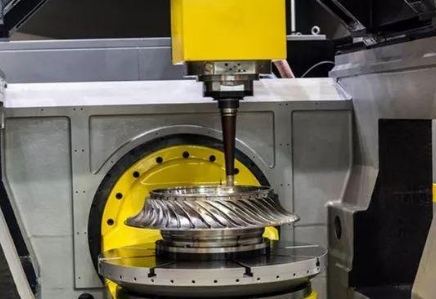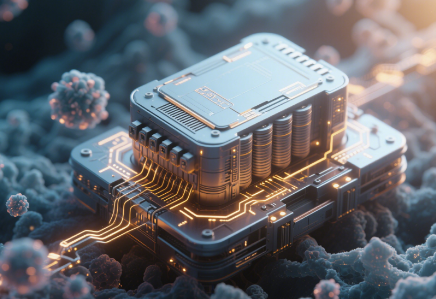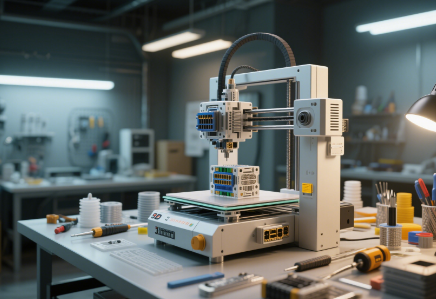The Intricate Art of Nanoscale Precision Manufacturing and Its Impact on Miniature Systems
1/15/2025 3:02:06 PM
In the fast - paced tech world, nanoscale precision manufacturing has become a game - changer for miniature systems. Operating at the billionth - of - a - meter scale, it creates components with unrivaled accuracy, opening doors in multiple industries.
Understanding Nanoscale Precision Manufacturing
The Basics of Nanoscale
The nanoscale, spanning 1 - 100 nm, is minuscule. A human hair, for example, is 80,000 - 100,000 nm wide. At this scale, materials have unique properties. Their high surface - to - volume ratio boosts reactivity and conductivity, forming the basis for advanced mini - systems.
Manufacturing Techniques
Atomic layer deposition (ALD) builds thin films atom - by - atom. Reactant gases create uniform, conformal films, crucial for nanoscale components like transistors and sensors.
Impact on Miniature Systems
Enhanced Performance in Electronics
Nanoscale manufacturing has improved miniature electronics. Smaller transistors and more integrated components boost processing speed, cut power use, and add functionality. In microprocessors, shrinking transistors enables multi - core designs for complex tasks.
It also enables new components. Graphene, with great conductivity and strength, shows promise in high - performance and flexible electronics, outperforming silicon - based transistors. These advancements drive smart device innovation.
Advanced Sensors and Actuators
Nanoscale precision revolutionizes sensors and actuators. Nanoscale sensors, like nanowire - based ones, are more sensitive, useful for environmental, healthcare, and security monitoring.
Nanoscale manufacturing creates smaller, more precise actuators. MEMS actuators, made with these techniques, are used in printers, projectors, and microfluidic devices, enabling more accurate miniature systems.
Energy - related Applications
In energy, nanoscale manufacturing boosts efficiency in conversion and storage. In solar cells, nanomaterials enhance light absorption and charge separation. Nanoparticle coatings increase panel reflectivity, and nanowire arrays improve charge collection.
For energy storage, nanomaterials like carbon nanotubes and silicon nanoparticles enhance battery energy and power density. These advancements are key for electric vehicles and renewable energy adoption.
Challenges and Future Prospects
Technical Challenges
Nanoscale manufacturing faces scalability issues. Techniques like EBL and ALD are costly and slow, limiting large - scale production. Developing scalable, high - precision methods is crucial.
Integrating nanoscale components is also tough. Material interactions are complex, and ensuring compatibility requires deep knowledge of nanoscale science and engineering.
Future Prospects
The future of nanoscale manufacturing in mini - systems is bright. New materials like quantum dots and metamaterials will enable high - performance devices.
Combining nanoscale manufacturing with AI and biotechnology will likely yield revolutionary products. For example, nanoscale sensors paired with AI could create self - adapting mini - devices.
In conclusion, nanoscale precision manufacturing deeply impacts miniature systems, fueling innovation. Despite challenges, its potential for future advancements is vast, set to shape technology and improve lives.
Understanding Nanoscale Precision Manufacturing
The Basics of Nanoscale
The nanoscale, spanning 1 - 100 nm, is minuscule. A human hair, for example, is 80,000 - 100,000 nm wide. At this scale, materials have unique properties. Their high surface - to - volume ratio boosts reactivity and conductivity, forming the basis for advanced mini - systems.
Manufacturing Techniques
Nanoscale manufacturing uses several advanced methods. Lithography, key in semiconductor production, transfers patterns from a photomask to a substrate. Traditional optical lithography has evolved into EUV lithography, using 13.5 - nm light to create 5 - nm or smaller patterns, enhancing chip integration in devices like smartphones.

Atomic layer deposition (ALD) builds thin films atom - by - atom. Reactant gases create uniform, conformal films, crucial for nanoscale components like transistors and sensors.
Impact on Miniature Systems
Enhanced Performance in Electronics
Nanoscale manufacturing has improved miniature electronics. Smaller transistors and more integrated components boost processing speed, cut power use, and add functionality. In microprocessors, shrinking transistors enables multi - core designs for complex tasks.
It also enables new components. Graphene, with great conductivity and strength, shows promise in high - performance and flexible electronics, outperforming silicon - based transistors. These advancements drive smart device innovation.
Advanced Sensors and Actuators
Nanoscale precision revolutionizes sensors and actuators. Nanoscale sensors, like nanowire - based ones, are more sensitive, useful for environmental, healthcare, and security monitoring.
Nanoscale manufacturing creates smaller, more precise actuators. MEMS actuators, made with these techniques, are used in printers, projectors, and microfluidic devices, enabling more accurate miniature systems.
Energy - related Applications
In energy, nanoscale manufacturing boosts efficiency in conversion and storage. In solar cells, nanomaterials enhance light absorption and charge separation. Nanoparticle coatings increase panel reflectivity, and nanowire arrays improve charge collection.
For energy storage, nanomaterials like carbon nanotubes and silicon nanoparticles enhance battery energy and power density. These advancements are key for electric vehicles and renewable energy adoption.
Challenges and Future Prospects
Technical Challenges
Nanoscale manufacturing faces scalability issues. Techniques like EBL and ALD are costly and slow, limiting large - scale production. Developing scalable, high - precision methods is crucial.
Integrating nanoscale components is also tough. Material interactions are complex, and ensuring compatibility requires deep knowledge of nanoscale science and engineering.
Future Prospects
The future of nanoscale manufacturing in mini - systems is bright. New materials like quantum dots and metamaterials will enable high - performance devices.
Combining nanoscale manufacturing with AI and biotechnology will likely yield revolutionary products. For example, nanoscale sensors paired with AI could create self - adapting mini - devices.
In conclusion, nanoscale precision manufacturing deeply impacts miniature systems, fueling innovation. Despite challenges, its potential for future advancements is vast, set to shape technology and improve lives.





